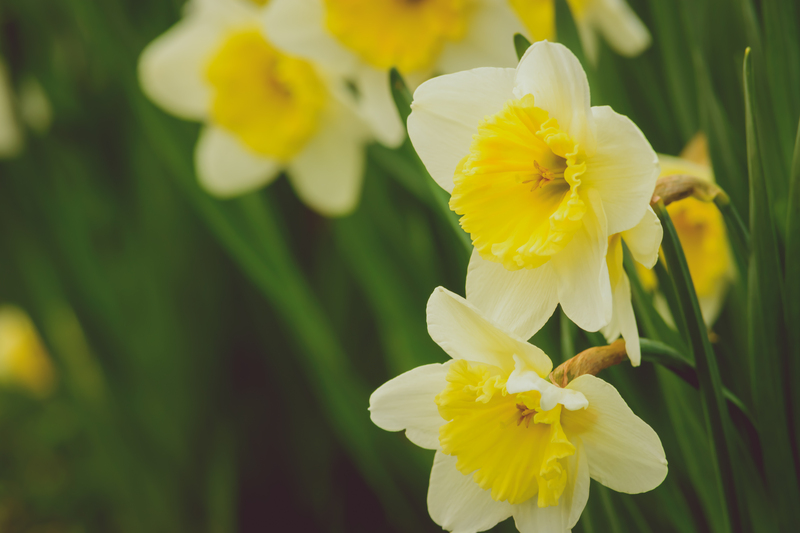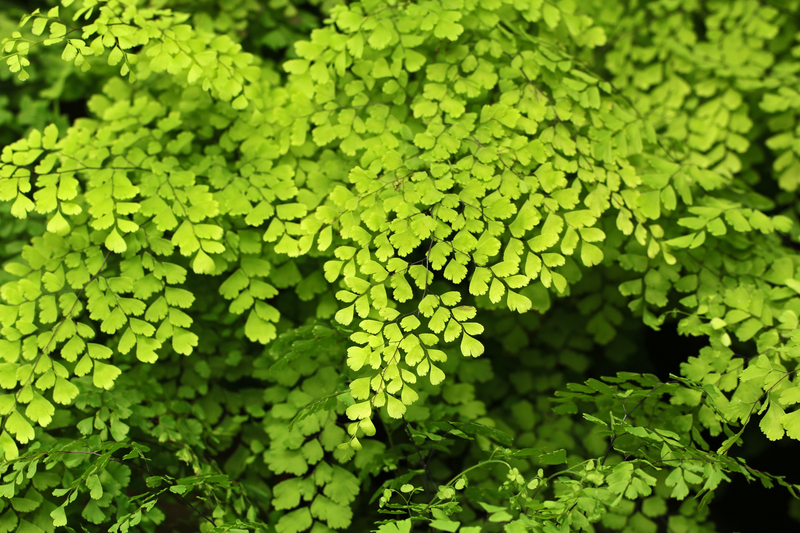Evergreen Climbers for Shade: An Oasis in Every Gloomy Nook
Posted on 18/06/2025
Evergreen Climbers for Shade: An Oasis in Every Gloomy Nook
Transforming shady corners into lush retreats is both an art and a science. If those dark, overlooked patches of your garden leave you longing for greenery, evergreen climbers for shade are the secret to turning every gloomy nook into an oasis. In this comprehensive guide, discover the best shade-tolerant evergreens, their unique features, and practical tips for thriving vertical shade gardens.
Why Choose Evergreen Climbing Plants for Shade?
Many garden spaces suffer from lack of light--whether it's the north side of a house, beneath lofty trees, or urban courtyards hemmed by tall walls. These places may seem hopeless for plant enthusiasts, yet shady gardens can become lush sanctuaries with the right choice of plants. Evergreen climbers are ideal because they offer:
- Year-round foliage: Retaining their leaves through all seasons for consistent coverage.
- Versatility: Perfect for fences, pergolas, arbors, walls, and trellises in shaded conditions.
- Wildlife value: Evergreen climbers often provide habitat and food sources for birds and pollinators.
- Minimal maintenance: Once established, many are hardy and easy to care for, requiring only occasional pruning.
Evergreen climbing plants for shaded spots can re-invent spaces where conventional plants fail to thrive, offering texture, fragrance, and privacy.

Top 7 Shade-Loving Evergreen Climbers
While many climbers prefer sunny positions, a select few have evolved to excel in the dappled light and deep shade so commonly found in mature gardens. Here's a curated selection of the finest:
1. Ivy (Hedera helix)
Ivy is perhaps the quintessential evergreen climber for shade. Tolerant of the deepest gloom, it will scramble up masonry, fences, or tree trunks effortlessly. Choose cultivated varieties for refined appearance, such as Hedera helix 'Goldheart' or 'Glacier' for variegated foliage.
- Best for: Tough spots, ground cover, classic English gardens.
- Bonus: Excellent nesting sites for birds and nectar source for late pollinators.
2. Evergreen Clematis (Clematis armandii)
This vigorous species is valued for its glossy leaves and fragrant white spring blossoms. Tolerates partial to light shade, especially in sheltered sites, and provides vertical interest when grown over pergolas or fences.
- Best for: Spring flowers, glossy foliage, quickly covering structures.
- Bonus: Sublime honey scent in bloom.
3. Star Jasmine (Trachelospermum jasminoides)
Though Star Jasmine prefers some sunlight, it will thrive in partial shade and even tolerates deeper shade in warmer climates. This climber's leathery dark-green leaves are evergreen, and the summer star-shaped, perfumed flowers are exquisite.
- Best for: Arches, warm walls, scent gardens.
- Bonus: Stunning reddish tints on new winter growth.
4. Russian Vine (Mile-a-minute Vine, Fallopia baldschuanica)
While aggressive, Russian Vine is unrivaled for rapid coverage, even in shady positions. Evergreen in milder climates, it's ideal for quickly disguising unsightly structures. Use with caution--it's extremely vigorous.
- Best for: Fast results, covering sheds and old fences.
- Bonus: Sprays of tiny white flowers in late summer.
5. Climbing Hydrangea (Hydrangea anomala subsp. petiolaris)
Praised for flourishing in even the darkest corners, climbing hydrangea boasts lovely, heart-shaped leaves and ethereal lacecap flowers in early summer. Maintains a woody framework with some evergreen cultivars, like 'Semiola'.
- Best for: North and east-facing walls, tree trunks, woodland gardens.
- Bonus: Self-clinging aerial roots--no support required.
6. Evergreen Honeysuckle (Lonicera henryi, Lonicera japonica)
These honeysuckles offer shiny, narrow evergreen leaves and beautiful tubular flowers attracting pollinators. 'Copper Beauty' (Lonicera henryi) is especially shade-tolerant and spectacular.
- Best for: Softening boundaries, scented gardens, wildlife planting.
- Bonus: Flowers in summer, followed by black berries.
7. Wintercreeper (Euonymus fortunei)
This adaptable plant is a true chameleon. Wintercreeper can be grown as groundcover or trained as an evergreen climber for shade. Variegated forms like 'Emerald Gaiety' provide year-round light, even in the gloomiest spots.
- Best for: Versatility, small spaces, colour contrast.
- Bonus: Suitable for walls, fences, and as a bushy shrub if left unsupported.
Creating an Oasis: How to Grow Evergreen Climbers in Shade
Proper selection is just the start. There are crucial steps to ensuring your evergreen climbing plants for shade will flourish and transform lifeless nooks into thriving green spaces.
Site Preparation
- Soil: Most evergreen shade climbers prefer rich, fertile soils with good drainage. Amending the area with organic matter (compost, well-rotted manure) boosts vigor.
- Mulching: A thick layer of organic mulch helps retain moisture and suppresses competing weeds around the new plantings.
- Drainage: Check for persistent wetness in deep shade, especially near structures, and improve drainage if necessary.
Choosing the Right Support
- Use sturdy trellises, wires, or mesh for twining or scrambling climbers. Self-clingers like ivy and climbing hydrangea need only a secure surface.
- Install framework before planting to avoid root disturbance later.
Planting and Initial Care
- Water well upon planting and keep evenly moist during the first growing season.
- Feed with balanced, slow-release fertilizer in early spring.
- Plant extra deep (especially with clematis) to protect the main stem from weather and encourage robust growth.
Pruning and Maintenance
- Most evergreen climbers require minimal pruning--just remove dead or damaged stems annually.
- Train young shoots onto your chosen support for the first few years.
- Trim after flowering when needed to control spread.
Design Ideas: Inspiring Shade-Garden Transformations
With shade-tolerant evergreen climbers at your disposal, the possibilities for beautifying lifeless corners are endless. Here's how to make the most of these adaptable plants:
- Welcoming Entrances: Frame doorways with star jasmine or evergreen honeysuckle for continuous seasonal interest and enchanting scent.
- Screening Solutions: Evergreen ivies and fast-climbing honeysuckle create privacy hedges on fences and trellises.
- Vertical Woodland: Combine climbing hydrangea with evergreen clematis on a north-facing wall for dynamic, layered shade interest.
- Hide Unsightly Corners: Drape thick-leafed wintercreeper or ivy over sheds, bin stores, or garages that never see sunshine.
Mix textures, leaf shapes, and flower forms to create an immersive, tranquil retreat that invites birds, insects, and humans alike.
The Benefits of Evergreen Climbing Plants in Every Season
Unlike deciduous species, shade-adapted evergreen climbers provide a stable backdrop of foliage all year, ensuring visual interest even in the bleakest months.
- Winter: Persistent leaves shelter wildlife and soften stark compositions.
- Spring: Early blooms from clematis or honeysuckle announce warmer days, even before the trees leaf out.
- Summer: Dense greenery offers cooling shade, reduces glare, and deadens outside noise.
- Autumn: Many varieties offer berries or warm-tinted new growth, extending the season of interest.

Frequently Asked Questions (FAQ): Evergreen Climbers for Shade
Which evergreen climbers grow in full shade?
Top picks include ivy, climbing hydrangea ('Semiola'), wintercreeper, and some shade-tolerant honeysuckles. These thrive with minimal sunlight, though all benefit from occasional indirect light.
Will these climbers damage my walls?
Self-clinging species like ivy and climbing hydrangea can penetrate damaged mortar. Regular wall maintenance and planting away from vulnerable structures mitigate any risks.
Do evergreen climbers need support?
Self-clinging climbers attach to surfaces unaided. Twining or scrambling climbers need trellises, wires, or netting to reach their full potential.
Can I grow these evergreens in containers?
Many climbers, such as star jasmine and evergreen clematis, do well in large pots with regular watering and feeding. Ensure the container is large, deep, and provides stable support.
How do I control the spread of vigorous climbers?
Choose cultivated varieties bred for garden use. Prune after flowering, and regularly monitor growth, especially in confined spaces.
Conclusion: Every Gloomy Nook Holds Potential
Shade should not be seen as a barrier but as an invitation to creativity. With the strategic use of evergreen climbers for shade--whether ivy, jasmine, clematis, or honeysuckle--your garden's shadowy recesses can become lush, green sanctuaries alive with sights, scents, and sounds year-round.
By selecting the right species, providing support and nourishment, and celebrating the unique ambience of shade, every dark nook can be transformed into a living, thriving oasis. Dare to reimagine your shaded spaces--start with an evergreen climber, and discover the magic for yourself.

